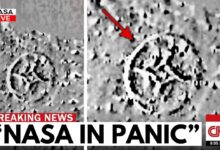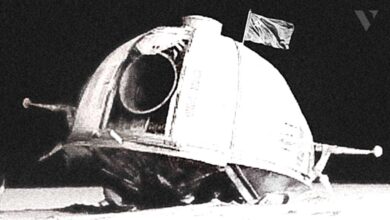Vatican Secret Vault Finally Opened, And It’s Not Good
The Vatican Archives: A Hidden World of Secrets and Wonders
The Vatican Archives, an extensive and enigmatic collection, have captivated scholars, historians, and the public for centuries. Hidden deep within the walls of Vatican City, this treasure trove spans over 12 centuries of human history, housing over 53 miles of shelves containing ancient manuscripts, papal correspondence, and diplomatic records that have influenced the course of nations. These archives are meticulously preserved in climate-controlled chambers, safeguarding not only religious documents but also priceless artifacts that can potentially rewrite our understanding of history.
The history of the Vatican Archives begins with the establishment of the Catholic Church, but the organized collection of documents only took shape under Pope Paul V in 1612. Before this time, important papal documents were scattered throughout Rome, leaving them vulnerable to theft or destruction. By centralizing these records, Pope Paul V ensured the preservation of crucial materials, laying the foundation for what is now one of the world’s most significant historical collections.
The name “Secret Archives” often causes confusion. Contrary to popular belief, “secret” does not suggest forbidden knowledge, but rather refers to the private and confidential nature of the papacy’s documents. Over the years, however, rumors have abounded about the contents of these archives, with some speculating they might hold secrets ranging from alien encounters to suppressed historical events.
The archives expanded considerably during the 17th and 18th centuries as ambassadors, known as papal nuncios, sent vital intelligence reports to Rome. These documents were not just religious in nature but also political, containing valuable insights into the diplomacy and geopolitics of the time. At their height, the Vatican Archives functioned almost like a medieval intelligence agency, gathering information from every corner of the known world.
A significant moment in the history of the archives occurred in 1798 when Napoleon Bonaparte conquered Rome. In a dramatic move, Napoleon had the entire Vatican collection transported to Paris, highlighting the importance of the archives. While much of the collection was returned following Napoleon’s defeat, the archives were never quite the same. Nevertheless, the records remained intact and largely untouched for centuries, their significance undiminished.
Today, the Vatican Archives contain more than 35,000 volumes and 600 distinct collections. These documents date as far back as the 8th century and continue to grow as new materials are added by each papacy. Among the most famous and fascinating documents is the record of Galileo Galilei’s trial in 1633, which offers a glimpse into the Church’s vehement opposition to Galileo’s support of the heliocentric model of the solar system. This collection is a key artifact in the ongoing dialogue between science and religion.
Another landmark document in the archives is the correspondence surrounding King Henry VIII’s request for an annulment of his marriage to Catherine of Aragon, which eventually led to England’s break from the Catholic Church. These letters delve into the political intrigue, diplomatic pressures, and personal appeals that contributed to one of the most momentous religious and political schisms in European history.
The Vatican Archives also house the personal letters of Michelangelo, offering rare insights into the artist’s experience while working on the Sistine Chapel. These letters detail his artistic struggles, disputes over payments, and the physical toll the project had on his health, providing a window into the complex relationship between the artist and the papal authorities.
Perhaps one of the most historically significant documents in the archives is the 1493 papal bull issued by Pope Alexander VI. This document divided the newly discovered lands of the Americas between Spain and Portugal, giving the Church tremendous influence over the geopolitical landscape of the time. This decision shaped the course of European colonization and continues to be studied as an example of how the Church wielded power in worldly affairs.
Access to the Vatican Archives is highly restricted. Only scholars with the appropriate credentials can gain entry, and even then, they must submit detailed proposals outlining their areas of interest. Once inside, they are limited to examining only three documents per day. This controlled access adds to the air of mystery surrounding the archives, making them one of the most coveted collections for researchers in the world.
In recent years, the Vatican has begun a project to digitize the archives, preserving these invaluable documents for future generations. The use of high-resolution imaging and multisspectral analysis has revealed hidden texts, erased annotations, and previously undetected details in ancient manuscripts. This technological advance allows scholars to make connections between documents that may have gone unnoticed for centuries.
The Vatican Archives are not limited to religious texts alone. They also house a wealth of astronomical records. The Church, long before Galileo’s time, was one of Europe’s most significant patrons of astronomical research. The archives contain ancient star charts, observations of celestial events, and astronomical calculations used to determine the date of Easter. These records are a testament to the Church’s role in advancing scientific inquiry during the early modern period.
One particularly intriguing collection in the archives is the correspondence of Jesuit missionaries, who often kept detailed astronomical records, even when the Vatican officially rejected the heliocentric model. These records provide insight into the Church’s complex relationship with science and demonstrate the global reach of the Jesuit order, which was active across the Americas, Asia, and beyond.
The Vatican Archives are not only a treasure trove of religious and scientific documents but also contain fascinating geographical and ethnographic materials. These records provide a unique window into the exploration and mapping of the world. Some of the earliest maps in the collection reflect the theological beliefs of the time, with Jerusalem depicted at the center of the world. As European exploration advanced during the Renaissance, the Vatican became a key repository for geographical knowledge, housing records of Columbus’s voyages and even maps that suggest European awareness of the Americas before Columbus’s historic journey.
Ethnographic accounts from missionaries provide a rare glimpse into indigenous cultures. Jesuit reports from Japan, for example, describe local customs and geography, preserving knowledge of cultures that were later lost due to colonization. These records are invaluable for understanding the early interactions between European explorers and indigenous peoples.
The Vatican Archives also contain records related to the Knights Templar, a medieval order that grew from humble origins to become a powerful international organization. The archives hold documents detailing the order’s dramatic downfall, including arrest orders and records from the infamous trials of the early 14th century. These documents shed light on the political and religious conflicts that led to the dissolution of the order in 1312, offering insights into one of history’s most enduring mysteries.
Personal correspondence from notable historical figures is another treasure within the archives. Letters from Queen Elizabeth I reveal a monarch negotiating religious tensions through diplomatic channels, while correspondence from Emperor Constantine XI captures the last Byzantine emperor’s desperate pleas for military aid as Constantinople faced the threat of conquest by the Ottoman Empire. The collection also includes letters from intellectuals like Leonardo da Vinci, Mozart, and Voltaire, offering unique insights into the lives and thoughts of these luminaries.
In conclusion, the Vatican Archives are far more than a collection of religious documents. They are a vast repository of historical, scientific, geographical, and cultural knowledge that continues to provide scholars with invaluable insights into the past. As the Vatican continues its efforts to preserve and digitize these materials, the world will undoubtedly learn more about the secrets and wonders they contain, ensuring that the archives remain a vital source of knowledge for future generations.




